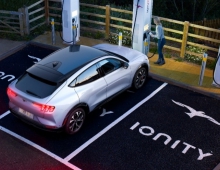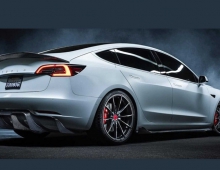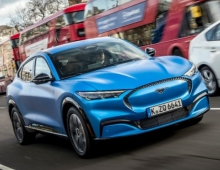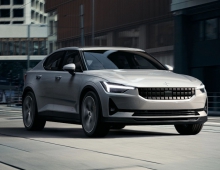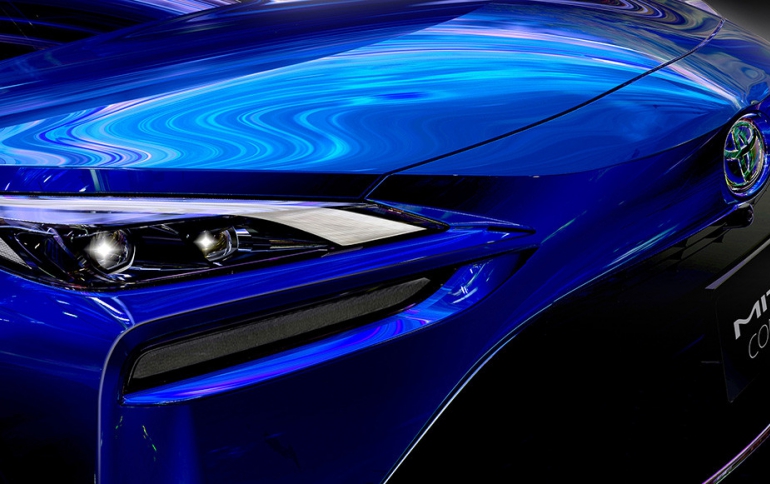
Toyota Unveils Fuel Cell "Mirai Concept" EV at 2019 Tokyo Motor Show's "Future Expo"
Toyota will preview the next generation of its zero-emission Mirai fuel cell electric vehicle (FCEV) at the 2019 Tokyo Motor Show.
"Mirai Concept," a final-stage development model of the second-generation Mirai will be on view at "Future Expo" from October 24 until November 4 at Megaweb. The re-designed Mirai si boasting significantly greater range, improved driving performance, and an elegant, sporty design that offers increased passenger room and comfort.
"We have worked to make a car that customers will want to drive all the time, a car that has an emotional and attractive design and the kind of dynamic and responsive performance that can bring a smile to the driver's face," said Yoshikazu Tanaka, Chief Engineer of the Mirai. "I want customers to say 'I chose the Mirai because I simply wanted this car, and it just happens to be an FCEV.' We will continue our development work focusing on that feeling, and we hope that with the new Mirai we will be a leader in helping to realize a hydrogen energy society."
Launched in 2014, the first-generation Toyota Mirai proved the global potential of hydrogen to power clean and sustainable mobility, combining a driving range with refueling time equivalent to conventional vehicles and emissions of nothing but water. Since then, approximately 10,000 Mirai have been sold globally.
Scheduled for launch starting in late 2020, initially in Japan, North America and Europe, the second-generation Mirai is much more than an eco-car, marking a new stage for FCEV technology. Improvements in fuel cell system performance and increased hydrogen storage capacity mean the new Mirai will target a thirty percent increase in driving range. The vehicle has also been totally redesigned based on Toyota's premium rear-wheel drive TNGA platform to combine greater agility and driving performance with an elegant exterior design.
The Mirai Concept features a dynamic exterior design built on Toyota's latest TNGA platform, including low lines, elegant proportions, sleek, taut bodywork and large, 20-inch diameter wheels. It will be presented in a newly developed exterior color (Force Blue Multiple Layers), that uses layers of color to achieve exceptional brightness and depth.

The interior, equipped with a 12.3-inch wide screen on the center console and instrument panel that embraces the driver, provides a modern space. The fuel cell system configuration using the TNGA platform also allows for five seats instead of the current-generation Mirai's four.
Engineered from the start to accommodate Toyota's full range of powertrains, including hydrogen fuel cells, Toyota's latest modular platform gives the Mirai Concept a higher degree of body rigidity, which contributes to greater agility and responsiveness, and a lower center of gravity, which makes for rewarding handling.
Improvements to the fuel cell system go beyond increased range to offer linear, smooth response when pulling away, unity between the driver's throttle inputs and the car's acceleration.
The next-generation Mirai features a fully-redesigned fuel cell system, including its fuel cell stack, that delivers substantially improved performance. This includes targeting a 30% increase in driving range over the current generation thanks to increased hydrogen storage capacity, among other measures.
Costing consumers about 5 million yen ($46,500) after subsidies in Japan, the original Mirai is one of three fuel cell cars available to consumers. Hyundai Motor sells the Nexo, while Honda Motor Co Ltd (7267.T) leases out the Clarity.
Rival automakers such as General Motors Co. in the U.S. and BMW AG in Europe have invested in fuel cell technology but are prioritizing EVs in their current and future zero-emission products.
Fuel cell vehicles offer several advantages over battery-powered cars, including quicker refueling times and longer driving ranges. But they remain a novelty, accounting for less than 0.1% of the nearly 100 million vehicles produced each year, according to research by the National Academy of Sciences.
Toyota declined to disclose a price for the new model.


